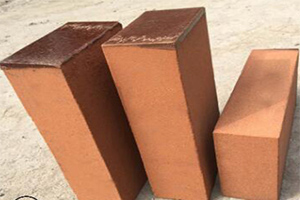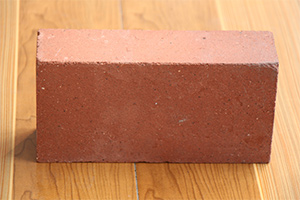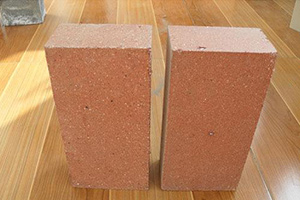When buying refractory materials for chimney masonry, is it better to choose acid-resistant bricks or acid-resistant castables? If the purchaser does not have a very clear demand, they will generally wander between the two. Chimney acid-resistant bricks belong to shaped refractory materials, refractory bricks. It has good acid resistance and flue gas erosion resistance. Its structure is compact, the surface is smooth and clean, and it has excellent acid resistance. However, it is brittle, poor in impact resistance, low thermal stability, and easy to crack when exposed to sudden cold and sudden heat. Some manufacturers of refractory materials have made a summary of the refractory materials for chimneys, which are rough as follows.

Question: Is it better to use acid-resistant bricks or acid-resistant castables for chimney masonry?
Which is better for the boiler chimney castable or acid-resistant brick? Castables and acid-resistant bricks have their own advantages. The refractory manufacturer recommends that you read the following in detail so that you can clearly know what kind of product is more suitable for the boiler chimney. Is it better to use castables for boiler chimneys or acid-resistant bricks?
The choice of chimney lining has an important influence on the construction conditions of the chimney. For example, the construction period, local environment, and other conditions affect the choice of lining materials. How to complete the project within the specified construction period? This needs to choose the lining material according to the local environment, temperature, construction conditions, and economy.
Generally speaking, when the height of the chimney is higher than 100 meters, acid-resistant castable is used as the lining, and when the height of the chimney is lower than 100 meters, the acid-resistant brick is used as the lining. No matter what kind of lining, the cylinder construction adopts a single slip form scheme, with an average of 2~3m/d and the slip form is completed in 60 days. After the cylinder sliding form is completed, the lining masonry will not affect the construction of surrounding buildings. Acid-resistant bricks are more complex than acid-resistant castables, so there will be no material returning to alkali after masonry.
When using acid-resistant castables, the castable must be baked in time to drain the free water in the castable. Before the alkali metal and alkaline earth metal substances are converted into hydroxides and migrate, they will react with each other to form stable compounds, thereby preventing the phenomenon of back alkali.

Choose castable or acid-resistant brick for the lining of the boiler chimney?
The traditional chimney project is lined with acid-resistant bricks. In order to reduce the cost and investment, the project plans to use refractory castables as the lining. Refractory castables are characterized by their low bulk density (1/3 of acid-resistant bricks), reducing the amount of chimney wall concrete and foundation steel bars, and low thermal conductivity (castables are 0112W/m·k, acid-resistant bricks are 019W/m·k). There is no need to add a heat insulation layer, which is more economical in design than acid-resistant bricks. Moreover, the performance of the castable is similar to that of the concrete. By combining the embedded steel bar and the concrete, the overall force performance is better. Compared with the economic investment of acid-resistant bricks and refractory castables, the price of refractory castables can save tens of thousands to hundreds of thousands based on the price of acid-resistant bricks. And the running time is long, so it is recommended to use boiler chimney castable as the lining body.
How to choose the lining of the power station boiler chimney?
As the flue gas discharged from the power station boiler chimney is saturated with water after wet deacidification, the flue gas temperature drops to between 50°C and 70°C, and it also contains a small amount of corrosive media such as sulfuric acid and entrained chloride. Due to the strong permeability of low-concentration sulfuric acid and chloride, the corrosion and damage to the inner wall of concrete are stronger than that of high-concentration sulfuric acid solution. Therefore, higher requirements are put forward for the anti-corrosion performance of the chimney lining after wet flue gas desulfurization in coal-fired power plants. The castable for the boiler chimney of the power plant produced by the Rongsheng refractory material manufacturer can be directly poured into the inner layer of the chimney to play a role in heat preservation, heat insulation, acid resistance, and corrosion resistance. And it has the advantages of relatively high compressive strength, which replaces the original traditional light bricks and acid-resistant bricks, and is convenient for construction.

Construction plan for stacking chimney with chimney lined with acid-resistant bricks
The construction plan for stacking chimneys with acid-resistant bricks lining the chimney introduced by the acid-resistant brick manufacturer, I hope will help the one which is looking for the solutions for the construction for the chimney’s lining masonry.
First, clean the inner wall of the chimney with a high-pressure water gun. If the old chimney has been preserved before, the damaged area needs to be cleaned up, and the intact part only needs to be cleaned. Then use special acid-resistant cement to make putty and repair the surface until the application is smooth and smooth. Then the surface of the acid-resistant clay is completely and thoroughly treated with corrosion protection. Using the traditional hoop bucket principle, the hoop ceramic lining with a thickness of 5mm is made outside the anti-corrosion layer, and the ceramic hoop ceramic lining is filled with low-temperature enamel and the surface is enameled.
According to this method, the ceramic-lined chimney is made of a chimney lining with acid-resistant bricks. The inner wall is smooth and beautiful, with four layers of anti-corrosion and excellent corrosion resistance. This should be the first choice for chimney corrosion protection in power generation companies.

